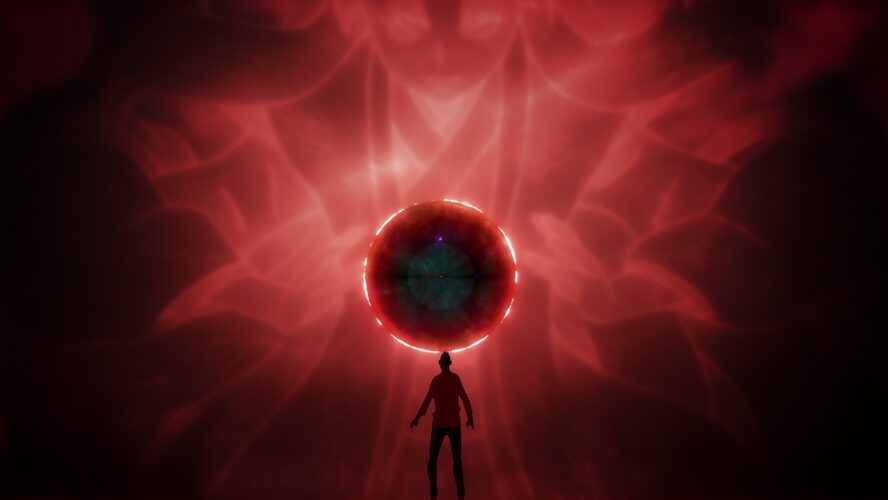Doctor Who, the beloved British sci-fi series, has captivated audiences since 1963 with its imaginative storytelling, quirky characters, and its iconic Time Lord, the Doctor, who travels through time and space in the TARDIS. While it is fundamentally a work of fiction, Doctor Who frequently brushes with real scientific concepts, particularly those from the realm of astrophysics. This article, The Science Behind Doctor Who: Real Astrophysics in Imaginary Worlds, explores how the show integrates true scientific principles with its narrative to create a universe that feels both fantastical and plausible.
Time Travel and Wormholes: The Foundations of the TARDIS
The centerpiece of “Doctor Who” is the Doctor’s time-traveling spaceship, the TARDIS. According to the lore of the show, the TARDIS travels through time and space using a mechanism akin to wormholes—a concept well-grounded in real-world physics. Wormholes, theoretical passages through space-time, could theoretically connect distant points in the universe or different times. The Science Behind Doctor Who: Real Astrophysics in Imaginary Worlds explains that while wormholes are still hypothetical and the subject of ongoing research, they provide a scientifically intriguing backdrop to the Doctor’s adventures.
:max_bytes(150000):strip_icc()/dw_ep7_12-2000-e02ea1ced19142b29c2802f300935f92.jpg)
You can watch Tales of the TARDIS here
Black Holes and the Time Vortex: Navigating Cosmic Phenomena
In several episodes, the Doctor navigates perilous encounters with black holes, which in the real world are regions of space where gravity is so strong that nothing, not even light, can escape from them. The Science Behind Doctor Who: Real Astrophysics in Imaginary Worlds delves into how these cosmic phenomena are portrayed in the series. The show often describes the Time Vortex as a pathway through which the TARDIS travels, similar to the edge of a black hole, blending real astrophysical concepts with the fictional universe of the Doctor.
The Multiverse and Parallel Universes: A “Who” Spin on a Complex Theory
The concept of parallel universes and the multiverse has been a recurring theme in Doctor Who. This ties into the real scientific hypothesis that our universe might be just one of many universes with varying physical laws. The Science Behind Doctor Who: Real Astrophysics in Imaginary Worlds examines episodes where characters encounter alternate versions of Earth, showcasing how the series uses the multiverse theory to explore complex moral and ethical questions within a scientific framework.

You can watch Doctor Who: 60 Years Of Secrets And Scandals
The Physics of Regeneration: Energy, Matter, and Transformation
One of the most iconic aspects of the Doctor is the ability to regenerate into a new form upon receiving a fatal injury. This process, while fictional, touches on legitimate scientific principles such as the conservation of energy and the transformation of matter. The Science Behind Doctor Who: Real Astrophysics in Imaginary Worlds analyzes how regeneration might mirror high-energy physics processes, where particles transform under extreme conditions, albeit in a much more dramatic and visual manner in the Whoniverse.
Quantum Mechanics and the Uncertainty Principle: Influence on Storytelling
Doctor Who occasionally incorporates elements of quantum mechanics, such as the Uncertainty Principle, which states that certain pairs of physical properties, like position and velocity, cannot both be precisely measured at the same time. In The Science Behind Doctor Who: Real Astrophysics in Imaginary Worlds, we explore how the show uses this principle in narratives where the outcome of events depends on characters’ observations or actions, thus integrating quantum mechanics into its plotlines.

You can watch Doctor Who: The Star Beast’ 60th Anniversary Special
Astrophysical Objects and Phenomena: The Celestial Backdrop
Throughout its run, Doctor Who has introduced viewers to a wide array of celestial objects and phenomena—neutron stars, pulsars, supernovae, and even theoretical constructs like Dyson spheres. The Science Behind Doctor Who: Real Astrophysics in Imaginary Worlds looks at these episodes to demonstrate how the series uses real astronomical objects to enhance the storytelling, grounding the fantastical elements in genuine celestial mechanics.
Conclusion: A Gateway to Wonder and Discovery
While “Doctor Who” is primarily a work of fiction, its frequent nods to real-world astrophysics provide an enriching layer of depth that stimulates curiosity and wonder about the universe. “The Science Behind Doctor Who: Real Astrophysics in Imaginary Worlds” shows that by merging scientific concepts with imaginative storytelling, the series not only entertains but also educates, making it a unique bridge between fantasy and reality. It invites viewers to dream and wonder, all while providing a glimpse into the fascinating world of astrophysics, making the universe a little less mysterious and a lot more magical.




